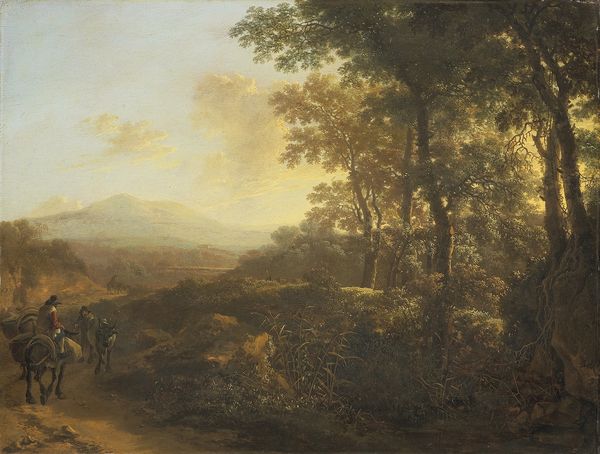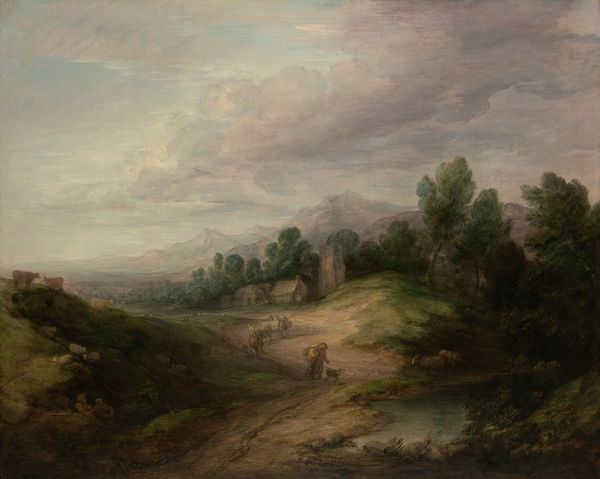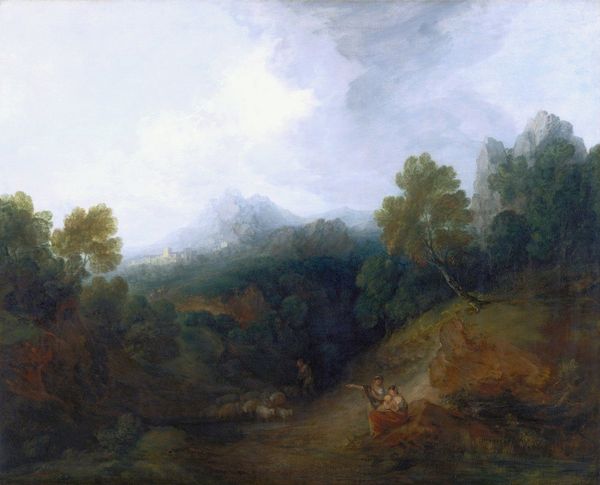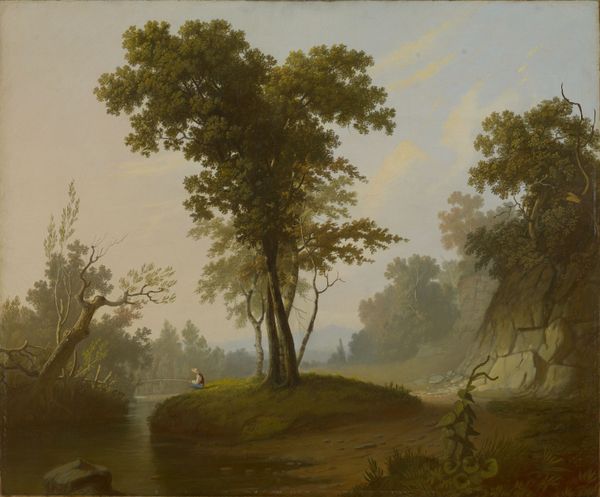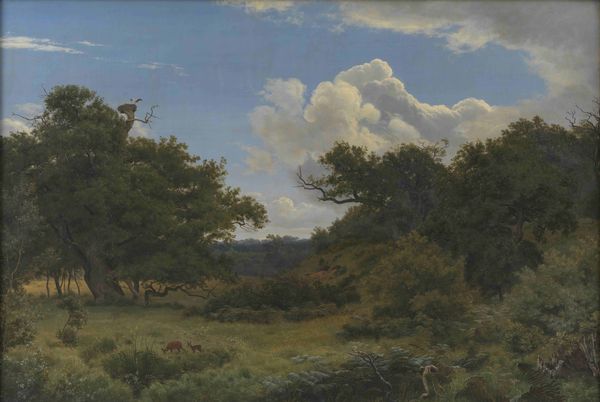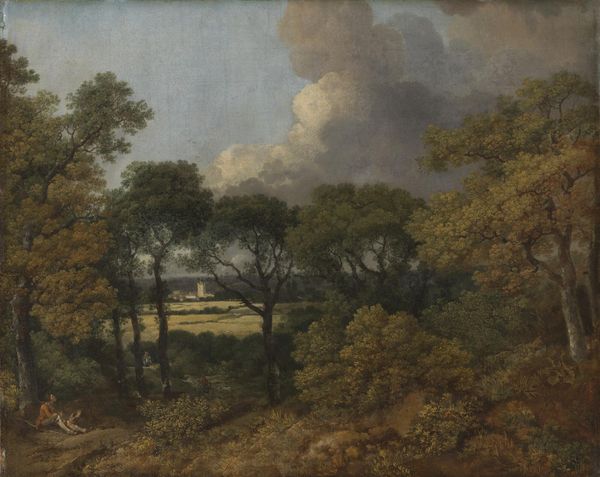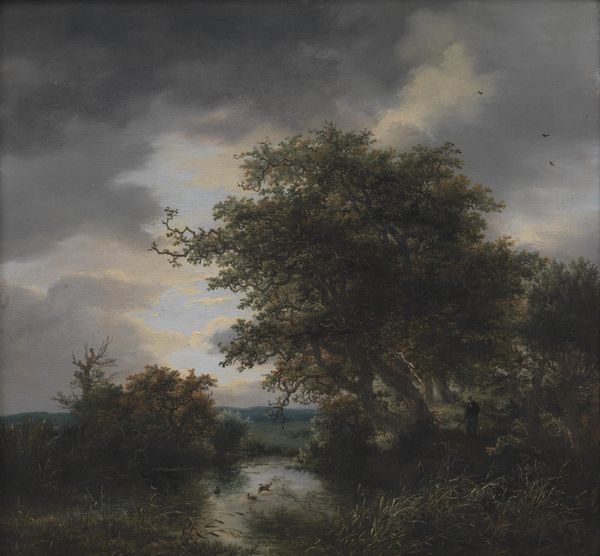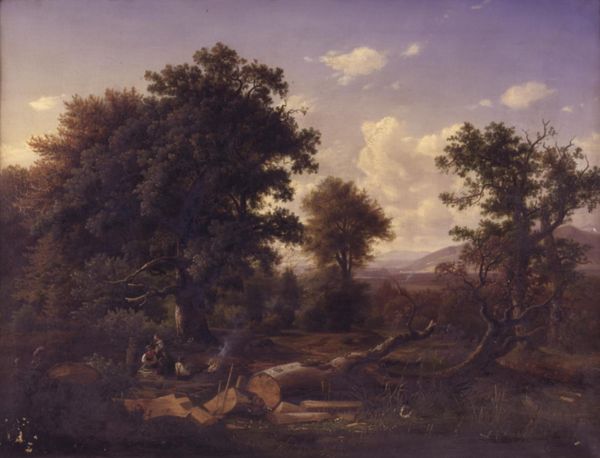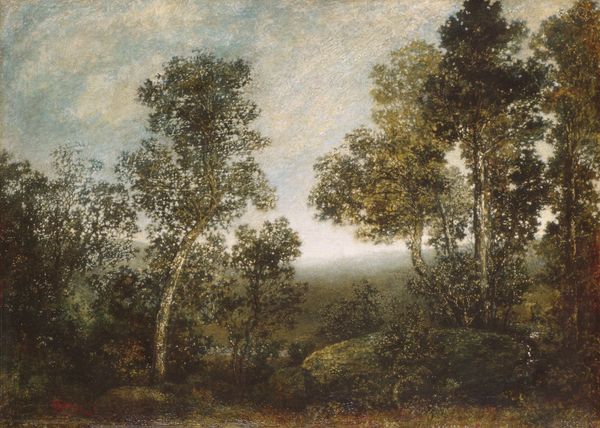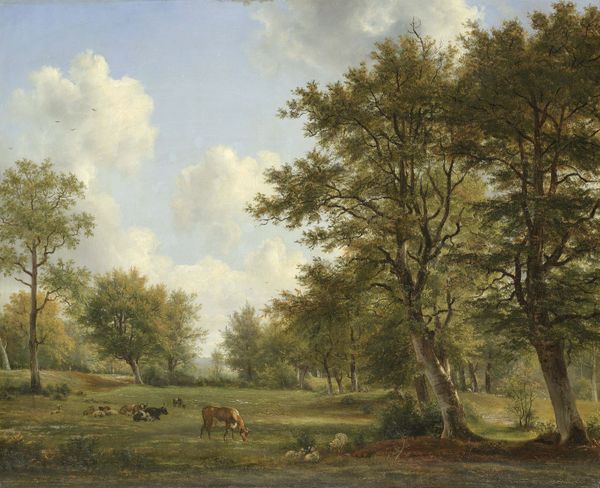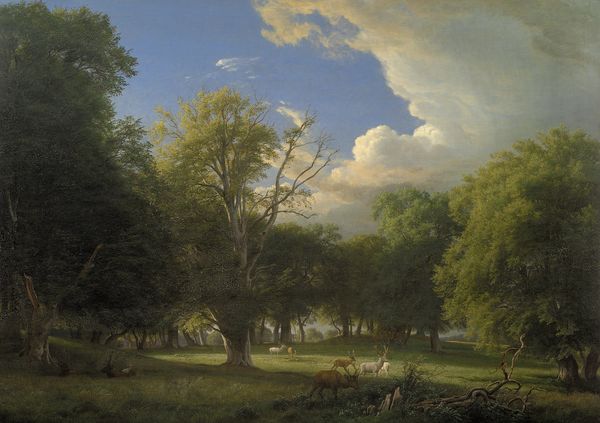
painting, oil-paint
#
painting
#
oil-paint
#
landscape
#
romanticism
#
realism
Dimensions: 68 cm (height) x 56.5 cm (width) (Netto), 80.8 cm (height) x 69.9 cm (width) x 6.6 cm (depth) (Brutto)
Editor: Here we have Julie Lütken's "Duck Shooting in a Wooded Landscape," painted in 1813. It’s an oil painting, and there's this stillness to it, a quiet tension maybe. What symbols or deeper meanings strike you when you look at this? Curator: Immediately, I see the duality. There's the peaceful scene of nature, beautifully rendered in the Romantic style, and then, barely noticeable at first, the figure of the hunter. What does the presence of this hunter, engaging in a hunt, tell us about humanity's relationship with nature during this period? Is it dominance, intrusion, or something more complex? Editor: That’s interesting! I was so caught up in the landscape I almost missed him. Do the specific species – the ducks – hold any significance? Curator: They very well might. Waterfowl often symbolize adaptability, resourcefulness, and journeying. By juxtaposing those qualities with the act of hunting, Lütken presents us with a potent image ripe with questions about sustainability, exploitation, and maybe even our own fleeting existence. What thoughts surface for you? Editor: I guess it challenges the traditional, idealized landscape. It's not just pretty; it's about our impact. I had considered the image a scene depicting calmness, yet the scene portrays death. Curator: Exactly. And remember, images of hunting also functioned as a common language during the Romantic period to express larger social commentaries. Keep digging; there’s so much more waiting to be discovered within it! Editor: I see what you mean. Thanks for opening my eyes to that.
Comments
No comments
Be the first to comment and join the conversation on the ultimate creative platform.
